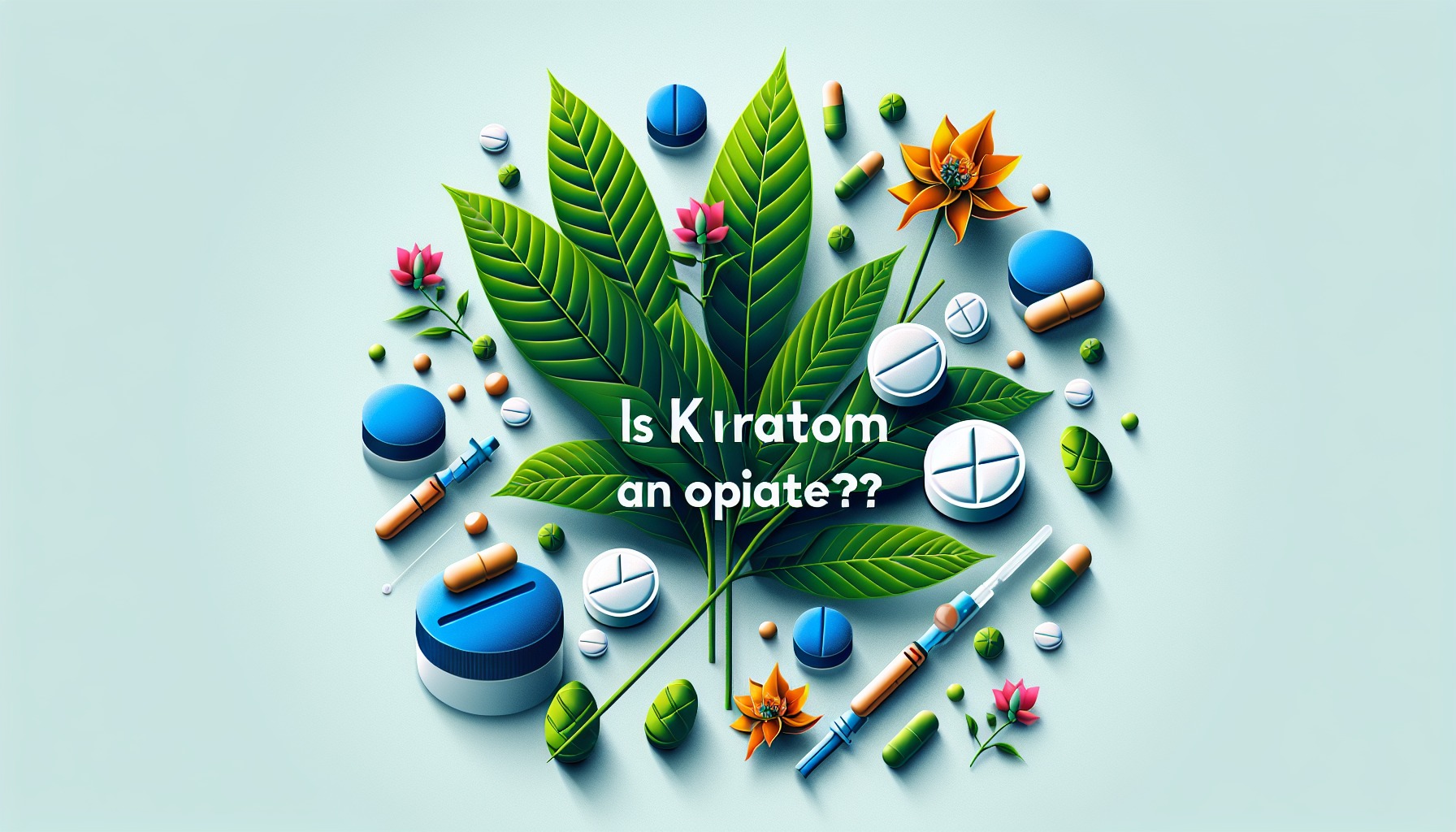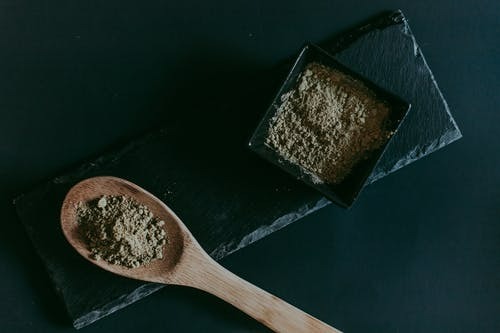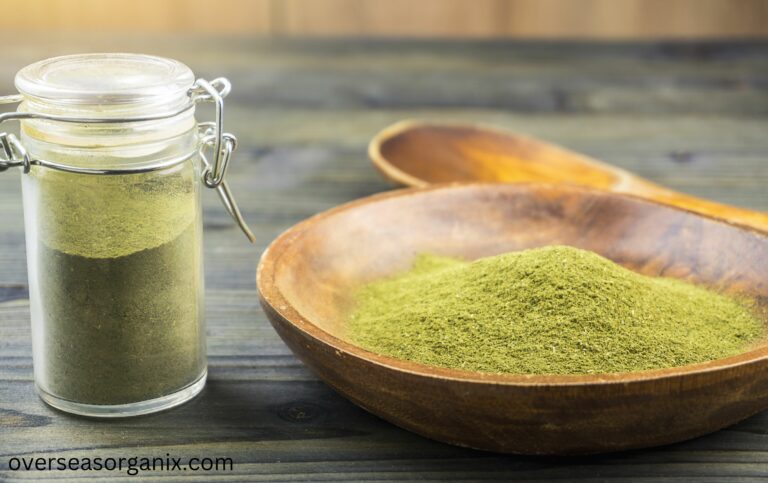No products in the cart.
Is Kratom an Opiate?
Kratom, an herbal extract from the leaves of the evergreen tree Mitragyna speciosa, is native to Southeast Asia and has been used traditionally for hundreds of years. It is known for producing opioid- and stimulant-like effects and can be consumed in several forms, including tea, tablets, powder, or liquid extract.
Is kratom an opiate? This question becomes significant as kratom’s legality and use are under scrutiny in the U.S. and internationally, despite its accessibility and reported uses for pain relief, fatigue, and managing drug withdrawal symptoms.
Is Kratom an Opiate: Understanding the Distinction
Understanding the distinction between kratom and traditional opiates is crucial for informed discussion and analysis. Is Kratom an Opiate? Unlike opiates that are derived from the opium poppy, kratom is a natural plant-based substance that does not fall under the opiate category by definition.
The primary active compounds in kratom, mitragynine, and 7-hydroxymitragynine, interact with opioid receptors in the brain. Still, they do so in a manner distinct from traditional opiates such as morphine or heroin. This interaction can produce some opioid-like effects, such as pain relief and sedation, yet it does not lead to the same level of addiction or respiratory depression typically associated with opiate use.
Key Differences:
-
- Source: Kratom is derived from the leaves of the Mitragyna speciosa tree, native to Southeast Asia, whereas opiates are derived from the opium poppy plant.
-
- Chemical Structure: The active compounds in kratom, mitragynine, and 7-hydroxymitragynine, have a different chemical structure from those found in opiates.
-
- Interaction with Opioid Receptors: Kratom’s compounds interact with opioid receptors in the brain but with less intensity and without the high risk of addiction and overdose associated with traditional opiates.
These distinctions are essential for understanding whether “Is Kratom an Opiate” has to be clarified. While kratom does share some opioid-like effects due to its interaction with opioid receptors, its chemical composition, source, and risk profile set it apart from traditional opiates.
Kratom Use and Potential Risks
Kratom, while used for various benefits such as mood enhancement, fatigue reduction, and pain relief, presents several potential risks that warrant consideration. Notably, its side effects range from mild to severe, impacting both physical and mental health.
Physical Side Effects:
-
- Weight loss
-
- Dry mouth
-
- Chills, nausea, and constipation
-
- Liver damage and muscle pain
-
- Respiratory issues in severe cases
Mental and Nervous System Effects:
-
- Dizziness and drowsiness
-
- Hallucinations and delusion
-
- Potential for breathing suppression, seizure, coma, and even death
The consumption of kratom can lead to stronger effects with increased quantities, and poison control centers in the US have reported approximately 1,800 cases involving kratom use from 2011 through 2017, some of which included fatalities. Is Kratom an Opiate? Kratom has been classified as possibly unsafe when taken orally, with research highlighting numerous safety concerns but failing to identify clear benefits.
Additionally, kratom’s interaction with prescription medicines can lead to abnormal brain function, and long-term use has been associated with withdrawal symptoms akin to those experienced with opioid use. Pregnant individuals should be particularly cautious, as kratom use during pregnancy can adversely affect infant development. There is also a risk of contamination with salmonella bacteria in kratom products, further emphasizing the substance’s potential dangers. Given these considerations, the safest approach is to consult with a healthcare provider to explore alternative treatment options.
Kratom’s Impact on Health
Kratom’s impact on health varies significantly from short-term to long-term use, encompassing a range of physical and psychological effects. Understanding these impacts requires a detailed analysis of kratom’s effects on the body and mind:
Short-term Effects:
-
- Euphoria: Users may experience heightened feelings of happiness and well-being.
-
- Alertness and Energy: There’s an increase in energy levels and alertness, making kratom appealing for fatigue reduction.
-
- Sedation: At higher doses, kratom can induce sedation, contributing to its use for pain relief.
-
- Decreased Pain: Kratom interacts with opioid receptors, leading to decreased pain sensation.
Long-term Effects:
-
- Dependence and Withdrawal: Regular kratom use can lead to physical dependence, with withdrawal symptoms that can be painful or sometimes lethal.
-
- Tolerance: Over time, users may require larger doses to achieve the same effects, increasing the risk of adverse effects.
-
- Physical and Psychological Symptoms: Long-term kratom use can exacerbate symptoms of depression and anxiety and lead to changes in physical hygiene, sleep habits, and overall daily routines.
-
- Risky Behavior: Dependency may drive individuals towards risky behaviors to obtain kratom.
Health Risks and Considerations:
-
- Adverse Effects: The spectrum of kratom’s adverse effects ranges from mild (nausea, constipation) to severe (psychiatric symptoms, cardiovascular issues).
-
- Addiction Potential: Both the FDA and research highlight the risk of addiction, misuse, and dependence on kratom.
-
- Legality and Accessibility: While kratom remains legal and accessible in many areas of the United States, its legal status is under constant review, reflecting ongoing concerns about its safety and potential for abuse.
-
- Research Gaps: Despite kratom’s popularity, comprehensive human clinical studies are scarce, complicating efforts to fully understand its pharmacological profile and impact on health.
This analysis underscores the complexity of kratom’s effects on health, highlighting the need for further research to elucidate its benefits and risks comprehensively.
The Realities of Kratom Addiction
Kratom addiction is recognized and managed similarly to other substance addictions, involving a combination of supervised medical detox and behavioral therapy. This approach is crucial due to the addictive properties of kratom, which can lead to substance use disorder. Kratom contains mitragynine and 7-hydroxymitragine, which bind to opioid receptors in the brain, akin to opioid drugs, thereby contributing to its addictive potential.
Signs of Kratom Addiction:
-
- Inability to control use frequency or amount
-
- Failed attempts to stop using kratom
-
- Neglect of responsibilities and decreased productivity
-
- Withdrawal symptoms when not using
Kratom Withdrawal Symptoms:
-
- Nausea and diarrhea
-
- Insomnia and general unease
-
- Muscle and joint pain
-
- Mood swings and runny nose
In the ongoing quest to understand kratom’s effects, is kratom an opiates? Treatment for kratom addiction often includes the prescription of medications such as buprenorphine to alleviate withdrawal symptoms, with an outpatient level of care typically sufficing for detox and treatment. Factors contributing to kratom addiction encompass personal history, external stressors, and co-occurring mental health conditions, highlighting the complexity of addiction and the necessity for comprehensive treatment approaches.
Research led by entities like the National Institute on Drug Abuse (NIDA) continues to evaluate kratom’s potential medicinal uses and understand its health and safety effects more thoroughly. Despite the FDA’s efforts to limit unlawful kratom products and encourage drug development research related to kratom, significant gaps in scientific understanding persist. This ongoing research underscores the importance of a cautious approach toward kratom use, recognizing both its potential benefits and risks.
Conclusion
As we delve into the complex realm of kratom, a pressing question emerges: Is kratom an opiate? While our journey through its intricacies has revealed similarities to traditional opiates, such as opioid-like effects, it’s evident that kratom is more than just another member of the opiate family. Its unique characteristics and distinct impact on health demand a closer examination.
Through rigorous exploration of kratom’s characteristics, distinctions from traditional opiates, and its impact on health, it becomes clear that while kratom shares some opioid-like effects, its unique properties set it apart as an alternative substance with both potential benefits and risks. The discussions have highlighted critical considerations surrounding kratom use, including its potential for addiction, the implications of its side effects, and the necessity for further research to understand its health effects fully. These points underscore the intricacy of kratom’s role in pain management and substance withdrawal, emphasizing the need for caution and informed decision-making among users and healthcare providers.
Frequently Asked Questions (FAQs)
No, kratom is not classified as an opiate. It is derived from the leaves of the Mitragyna speciosa tree and contains active compounds that interact with opioid receptors in the brain. However, it differs from traditional opiates in terms of its chemical structure and the intensity of its effects.
Kratom and opiates differ in their sources and chemical compositions. Kratom comes from the leaves of the Mitragyna speciosa tree, while opiates are derived from the opium poppy plant. Additionally, the active compounds in kratom, such as mitragynine and 7-hydroxymitragynine, have distinct chemical structures from those found in opiates.
Yes, kratom can produce effects similar to opioids due to its interaction with opioid receptors in the brain. However, these effects are typically less intense and do not lead to the same level of addiction or respiratory depression associated with traditional opiates.
Kratom does have addictive potential, similar to opiates, especially with prolonged or excessive use. However, the risk of addiction and overdose is generally lower compared to traditional opiates.
es, kratom use can pose various health risks, including physical side effects such as nausea and constipation, as well as mental and nervous system effects like dizziness and hallucinations. Long-term use of kratom may also lead to dependence, withdrawal symptoms, and adverse effects on mental health.








